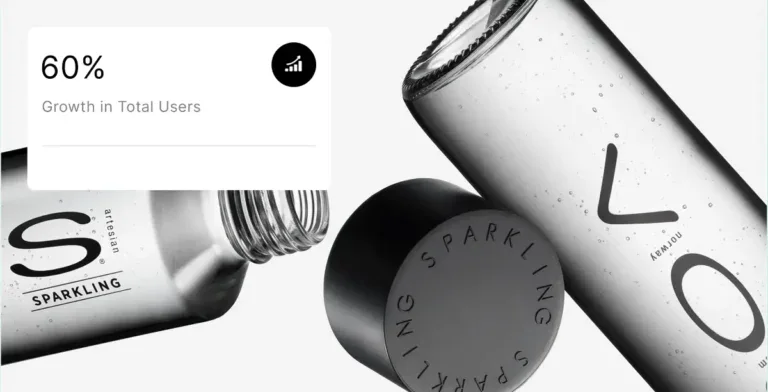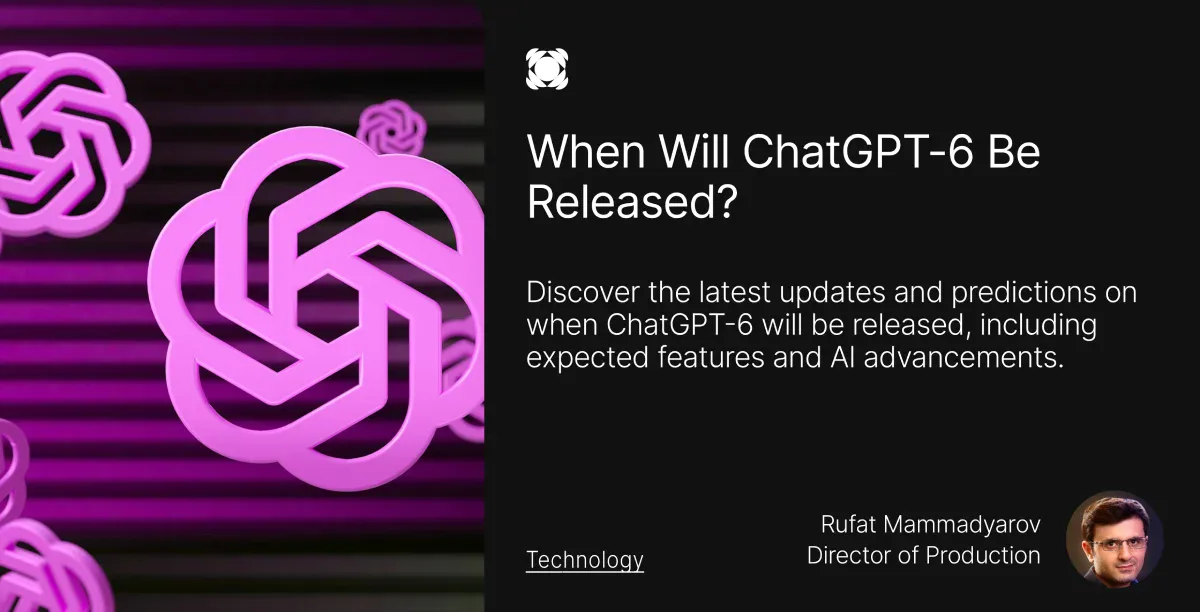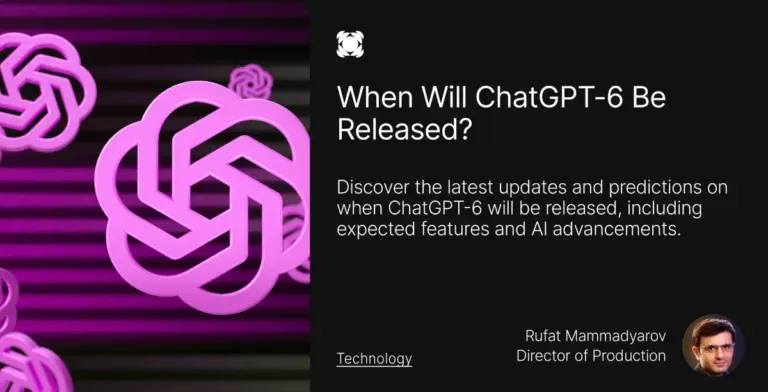The big question a lot of people are asking since the launch fo ChatGP-5 has been, “when will ChatGPT-6 be released?” Sam Altman has dropped the most important hint about ChatGPT-6’s release date: users won’t wait as long for GPT-6 as they did for GPT-5.
“The wait for GPT-6 will be shorter than the wait for GPT-5,” Altman stated clearly. This signals OpenAI’s accelerated development timeline for its next flagship AI model.
GPT-6’s most intriguing aspect lies in its focus on memory and personalization. The new version wants to “remember who you are.”
This marks a departure from being a simple Q&A engine to becoming an evolving collaborator that adapts to your specific workflow.
“People want memory,” Altman explained. “People want product features that require us to be able to understand them.”
GPT-5 delivered major improvements, yet OpenAI’s CEO appears more excited about the upcoming model. “I like the new one much better,” he remarked. He emphasized that deeper personalization will be GPT-6’s biggest differentiator.
Users will soon interact with an AI that truly remembers their priorities, working style, and previous conversations.
Trying to improve your SEO strategy but don’t know where to start? Let us help.
GPT-6 Introduces Persistent Memory and Personalization
OpenAI’s next major AI model highlights two key features: persistent memory and deep personalization.
Sam Altman called memory his “favorite feature of 2025.” He sees GPT-6 as something more than a system that just answers questions.
This radical alteration shows how users will interact with AI systems differently.
How memory will change user interactions
GPT-6’s memory capabilities will substantially extend beyond current implementations.
The AI will recognize and adapt to your priorities, routines, and individual traits over time. This breaks away from traditional AI interactions, where conversations do not connect with each other.
The persistent memory system will include two improved components.
First, saved memories will contain user-specified information, such as priorities. A reference chat history helps GPT-6 see communication styles and common topics.
This approach makes using GPT-6 feel like working with a long-term assistant. You won’t start from scratch each time.

Ground applications of this memory system will transform daily tasks.
For example, GPT-6 can format meeting notes your way. It remembers details about your business when creating content. It also tracks your interests while assisting with creative projects.
Professionals won’t need to rebuild context with every new conversation.
Why personalization is central to GPT-6
Personalization means more than remembering facts. GPT-6 aims to understand your priorities, grasp your intent, and craft responses just for you.
The model will look at user behavior, past interactions, and demographics. It will then create experiences that are uniquely tailored for each user.
Business applications will benefit as GPT-6 remembers your brand voice and campaign histories. It will understand your company’s specific workflows without needing repeated instructions.
Healthcare applications can provide more accurate medical guidance, while educational tools can deliver customized learning experiences.
Psychological research behind memory features
OpenAI developed these features while working closely with psychologists. They measured user well-being over time and studied how people respond to long-term AI use.
This unpublished research suggests OpenAI thinks carefully about the psychological effects of memory features.
Studies have revealed potential cognitive effects from AI usage. MIT’s research shows that depending solely on AI for tasks like writing reduces brain activity and memory formation.
These findings show why OpenAI designs GPT-6’s memory features. They aim to boost human abilities while keeping key cognitive functions intact.
Privacy considerations matter with the memory system. ChatGPT’s temporary memory feature doesn’t use encryption.
This raises worries about the risk of exposing sensitive data.
Altman sees this limit and suggests that stronger safeguards might be added to GPT-6. This is especially important for sensitive legal and medical questions.
User control remains essential to the design. Like current memory implementations, GPT-6 will let users manage their stored information. They can turn off features, delete memories, or start temporary interactions that don’t save information.
OpenAI Expands Customization and Ideological Neutrality
GPT-6 is a major step forward. You can now customize AI interactions more than ever before.
OpenAI’s development plans show major improvements to help users tailor their experience. These changes go beyond the simple personalization features we have today.
Sliders for tone, style, and political alignment
GPT-6 will have easy-to-use sliders. You can change the tone, style, and political stance of responses.
This builds on OpenAI’s custom instructions. It lets users set their priorities for ChatGPT’s responses.
Sam Altman foresees a model with a centrist default stance that users can modify based on their needs.
“I think our product should have a fairly center-of-the-road, middle stance, and then you should be able to push it pretty far,” Altman stated.
Users will have control over both ends of the spectrum. The model can show progressive views and “be super woke.” It can also accept conservative opinions. You can use these sliders to change different communication styles.
They range from factual responses for research to empathetic tones for personal chats.
Studies support the need for these adjustments. Research shows that users think models with neutral stances are less biased.
They also see these responses as higher quality.
These neutral answers typically use balanced language like “careful consideration” and show strong arguments from different viewpoints.
Explore how we increased AW Lake’s new user rate by 427% with a new SEO strategy in our latest case study.
Balancing user freedom with regulatory compliance
The question “when will ChatGPT-6 be released?” appears over and over with people not asking what it might come with. OpenAI tackles the challenge of offering customization freedom in a regulated environment.
The company has updated safety measures for new ways users guide the model. They have added the Moderation API to ensure instructions follow usage policies.
This balance grows more important as research reveals patterns in current models.
Studies show users notice popular LLMs have left-leaning political slants. Berkeley University and UChicago researchers suggest that political neutrality might not be ideal.
They recommend offering more LLM viewpoints to boost voice diversity. Their work showed that instruction-tuned models tend to lean more left than base versions.

New technical solutions might help address these issues. Researchers have found ways to map political ideology within models.
They can now guide outputs along the spectrum from liberal to conservative positions.
One researcher likened it to “a dial” that adjusts outputs to any position on the ideological scale.
Executive orders shaping AI behavior
Recent executive orders have shaped GPT-6’s development. They specifically require ideological neutrality in AI systems used by the federal government.
The Trump administration’s executive order on “Preventing Woke AI in the Federal Government” creates “Unbiased AI Principles” based on truth-seeking and ideological neutrality.
Truth-seeking requires AI to focus on historical accuracy, scientific inquiry, and objectivity. It must acknowledge uncertainty when information isn’t complete. Ideological neutrality means models should be neutral tools.
They must not favor any specific ideology.
Altman confirmed OpenAI’s steadfast dedication to compliance. He said future ChatGPT versions would meet these needs. They will also allow user customization options. Stanford researchers found that small changes helped models take neutral stances.
Users trusted these models more.
The executive order raises concerns about AI models altering the race or sex of historical figures. It also covers denying requests due to race or supporting specific gender identity ideas.
OpenAI’s customization for GPT-6 aims to address these concerns. It uses user controls instead of relying on built-in biases.
Multimodal Capabilities and Voice Features Evolve
ChatGPT-6 changes how we interact with AI. It combines voice and visual features, making communication smoother across different senses.
Adjustable voice pitch and speed
GPT-6 takes voice customization to new heights. Users now control their voice interactions with precision and can adjust tones from calm to emotional.
The system lets you change how fast the AI speaks to match your listening priorities or specific needs.
The system offers nine lifelike output voices that go beyond simple tweaks. Each voice has its own personality – from the relaxed and versatile “Arbor” to the bright and curious “Vale.”
GPT-6 matches your speaking rhythm and emotional tone during conversations.
The Advanced Voice Mode responds better to interruptions by stopping right away when users speak up.
This creates natural conversations, unlike older models that kept talking regardless of what the user said.
Cross-modal reasoning with images and documents
GPT-6 takes a big step forward in processing different types of information at once through cross-modal reasoning (CMR).
The system can blend and interpret text, images, and sound in ways previous versions couldn’t handle.
Users can share gallery images, take new photos, or show documents and slides during chats. GPT-6 looks at these visual elements along with your text questions to create detailed responses that connect what you say and show.
This improvement aids analytical work. It helps with understanding charts, diagrams, and reviewing technical documents. The system links various input types in language-aligned spaces.
This cuts down on mistakes and misinterpretations made by older models.
Real-time voice conversations and spatial reasoning
One of the most interesting features that we learned about when searching for answers on “when will ChatGPT-6 be released?” was its potential voice capabilities.
GPT-6’s live voice features achieve sub-100 millisecond latency, making conversations feel smooth and natural.
Smart algorithms filter out noise and echo while focusing on your voice. This works well even in busy places like cafés or on public transport.
The system handles speech and text together. It finds accurate answers from data sources and responds in a natural way.
This works well, even at busy times, because of optimized systems. They manage speech, reasoning, and voice creation all at once.

New spatial reasoning features help GPT-6 understand how objects relate to each other in physical space.
Users can show objects or environments through their cameras during voice chats.
The system quickly analyzes and discusses everything from art to step-by-step guides for tasks.
Developer Tools Get Smarter With Codex 3
Codex 3 is a game-changer for OpenAI’s code system. It transforms how developers and AI work together in software creation.
From static code help to live code reviews
The evolution of Codex goes beyond simple code completion to become a proactive code review partner. The system analyzes entire codebases, understands dependencies, and runs tests to confirm behavior.
This change lets Codex compare a PR’s intent with the actual code. It provides a level of scrutiny similar to that of the best human reviewers.
GPT-5-Codex showed remarkable results in evaluations of popular open-source repositories.
The comments were much less likely to be wrong or unimportant than before. This helps keep developers focused on critical issues.
OpenAI’s teams use Codex to check most PRs. It finds hundreds of potential issues every day before human reviewers begin their tasks.
Automated bug detection and architectural suggestions
Codex 3’s capabilities extend far beyond finding syntax errors. The system spots scalability bottlenecks, identifies refactoring opportunities, and finds architectural inconsistencies in codebases of all sizes.
Teams can catch issues early when fixes are easier, which reduces maintenance costs over time. ChatGPT’s testing results proved impressive, up to 63.76% for Null Dereference bugs and 82.73% for Resource Leak bugs.
These numbers beat leading bug detectors by 12.86% and 43.13% respectively.
Enterprise use cases for GPT-6 in software teams
Leading companies have already merged earlier Codex versions into their daily work.
Cisco’s engineering teams use Codex to build ambitious ideas faster. Temporal speeds up feature development, debugging, test execution, and large codebase refactoring through Codex.
Recent data shows 84% of programmers now use AI tools, with ChatGPT leading their preferences. Software teams choose these tools to handle repetitive tasks like refactoring and test writing that often break focus.
Developers can stay in their flow state while working faster because complex tasks run in the background.
Learn how we improved Bonanno Concepts’ organic traffic by 648% after applying a custom SEO strategy in our recent case study.
When Will ChatGPT-6 Be Released?
Sam Altman gave us a peek into GPT-6’s development, which has already started.
His insights show a fundamental change in OpenAI’s product development cycle.
Altman hints at a shorter release gap
OpenAI’s CEO made it clear that GPT-6 will arrive faster than GPT-5 did. The company’s development timeline is picking up speed. Altman shared this news with reporters in San Francisco and gave a rare look into OpenAI’s product plans.
His words point to a new strategy that focuses on faster updates while balancing research goals with what the digital market needs.
Timeline comparison with GPT-4 and GPT-5
GPT-4 came out on March 14, 2023, but GPT-5 didn’t show up until August 7, 2025; leaving a 28-month gap between these major releases.
Without speeding things up, GPT-6 would come around December 2027.
But Altman’s latest comments hint at an earlier arrival that could cut months off the development cycle.
Factors that could delay or accelerate the launch
GPU capacity stands as the biggest hurdle in GPT-6’s timeline. “We have better models, and we just can’t offer them because we don’t have the capacity,” Altman explained, pointing to the shortage of powerful chips needed for large AI systems.
The solution to this problem requires huge investments, possibly “trillions of dollars on data center construction in the not very distant future.”
Adding advanced memory systems makes things technically challenging. Altman aims to make this launch “smoother than the GPT-5 release.”
This shows they’ve learned from past launches when choosing the timing.
Get a Custom ChatGPT SEO Strategy That Converts With Blacksmith
GPT-6 is set to change how we interact with AI in ways that actually matter. The memory systems, customization controls, and voice improvements aren’t just technical upgrades, they’re addressing real frustrations users have had with current AI tools.
It’s never been more important to stay on top of the AI game as now. With more and more people using ChatGPT to learn more about any topic, optimizing your website SEO so that your company appears in more AI searches is vital.
But just as any SEO strategy, creating a complete ChatGPT SEO strategy takes a lot of time and effort. This is time you could be using on other aspects of your business. So now what?
That’s where we come in. Blacksmith is a ChatGPT AI SEO Service Agency with a group of seasoned SEO experts ready to create the perfect ChatGPT AI strategy for your business.
We’ll improve your brand awareness and qualified organic traffic and ensure that your brand is as relevant as it can be to both ChatGPT and Google.
Still unsure if a ChatGPT AI SEO service is what your business needs? Don’t worry, click here to schedule a call with us and we’ll provide you with a complete website audit. This way we can show you all of the areas where you are losing organic traffic and how we can help you fix them.









